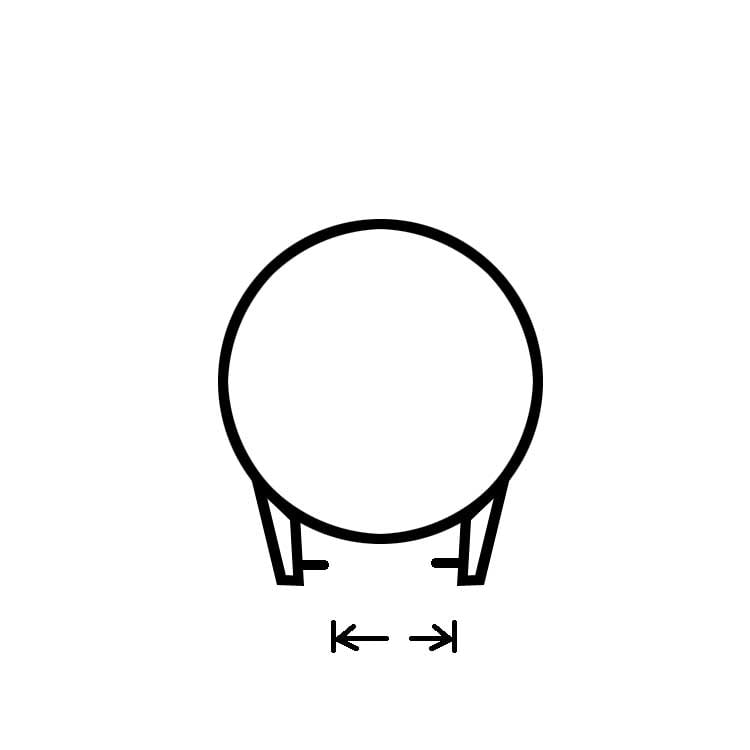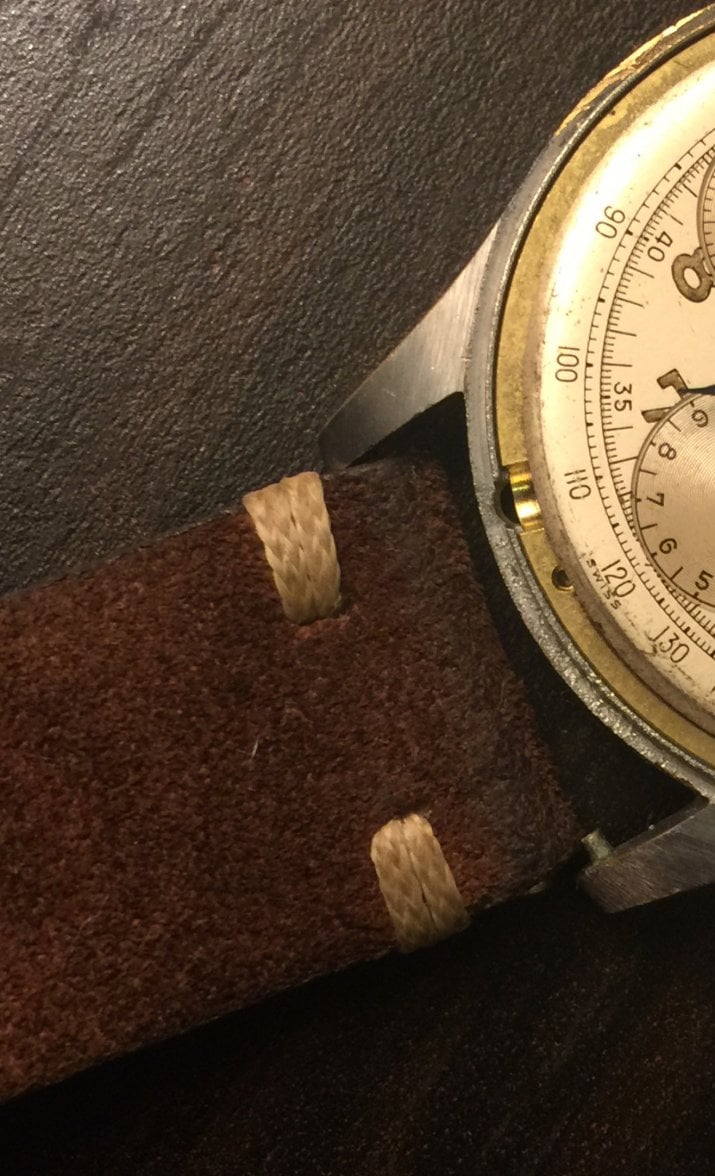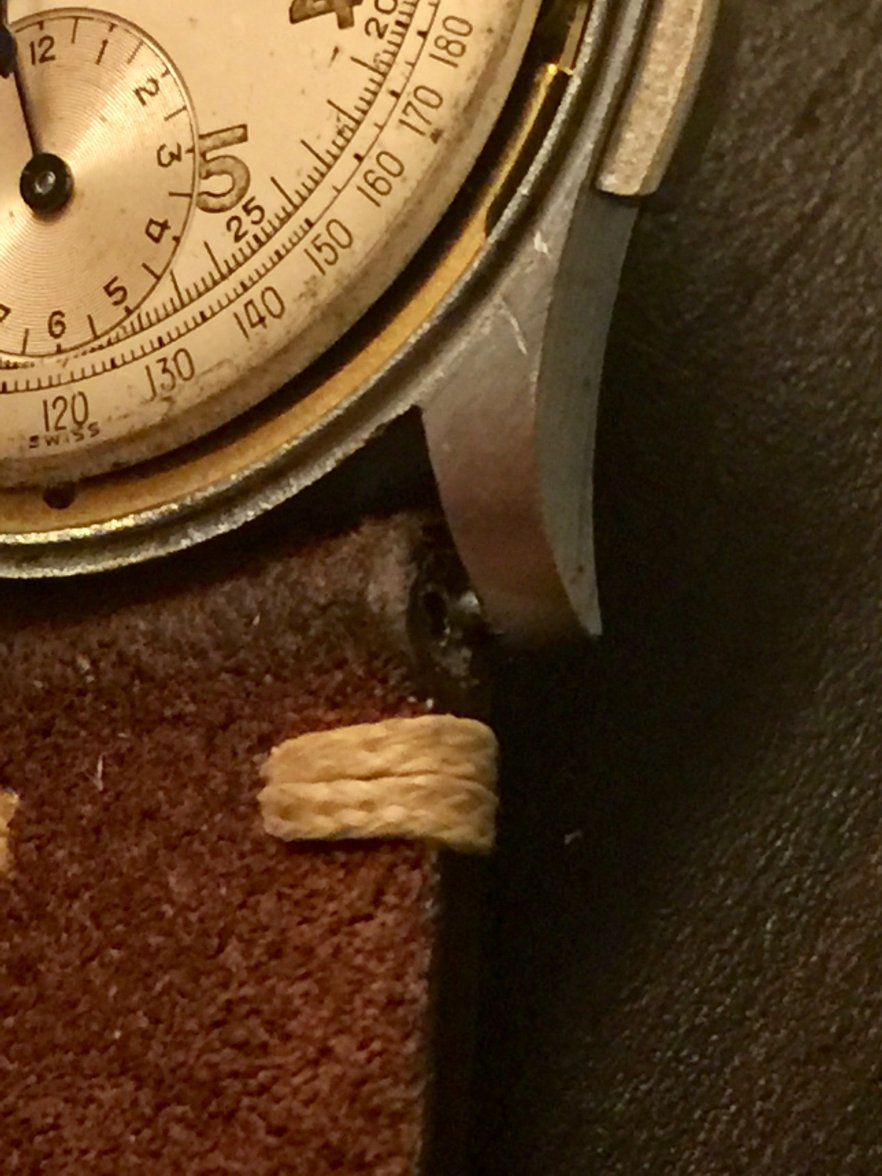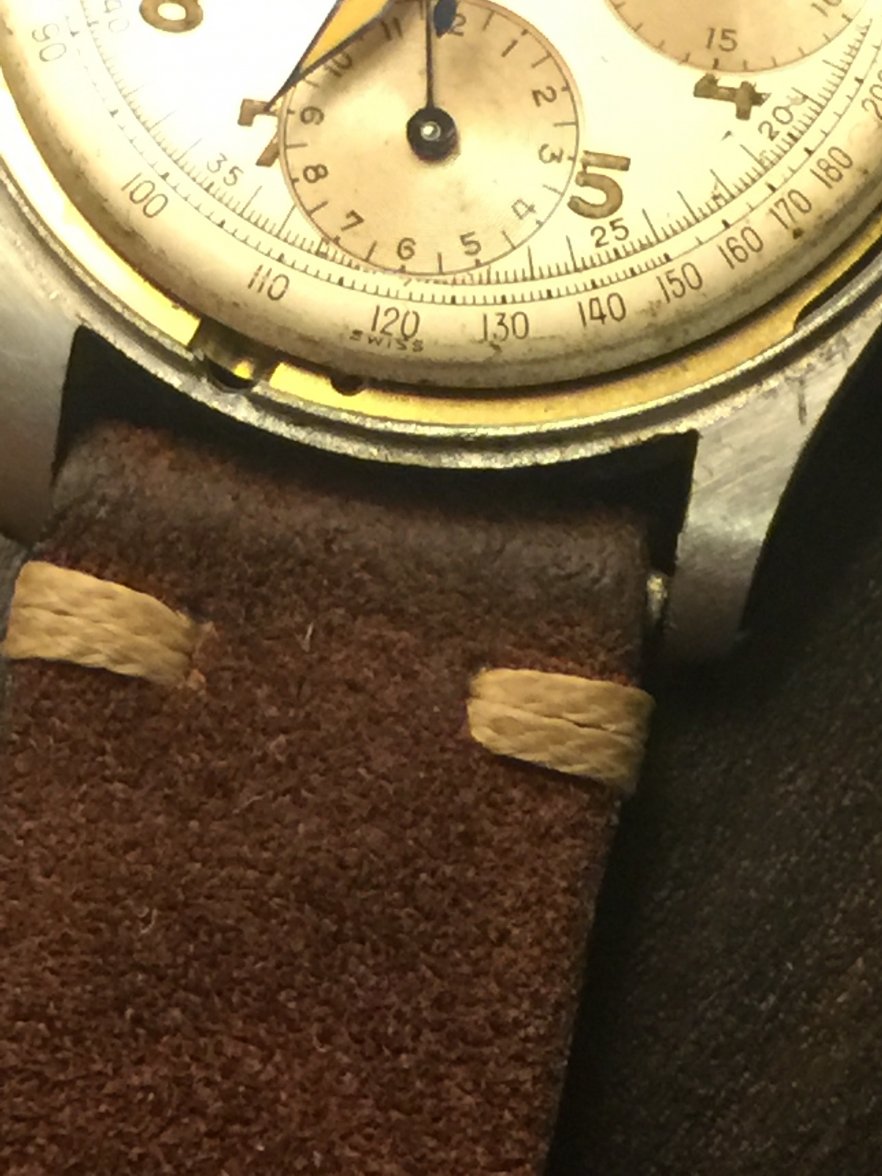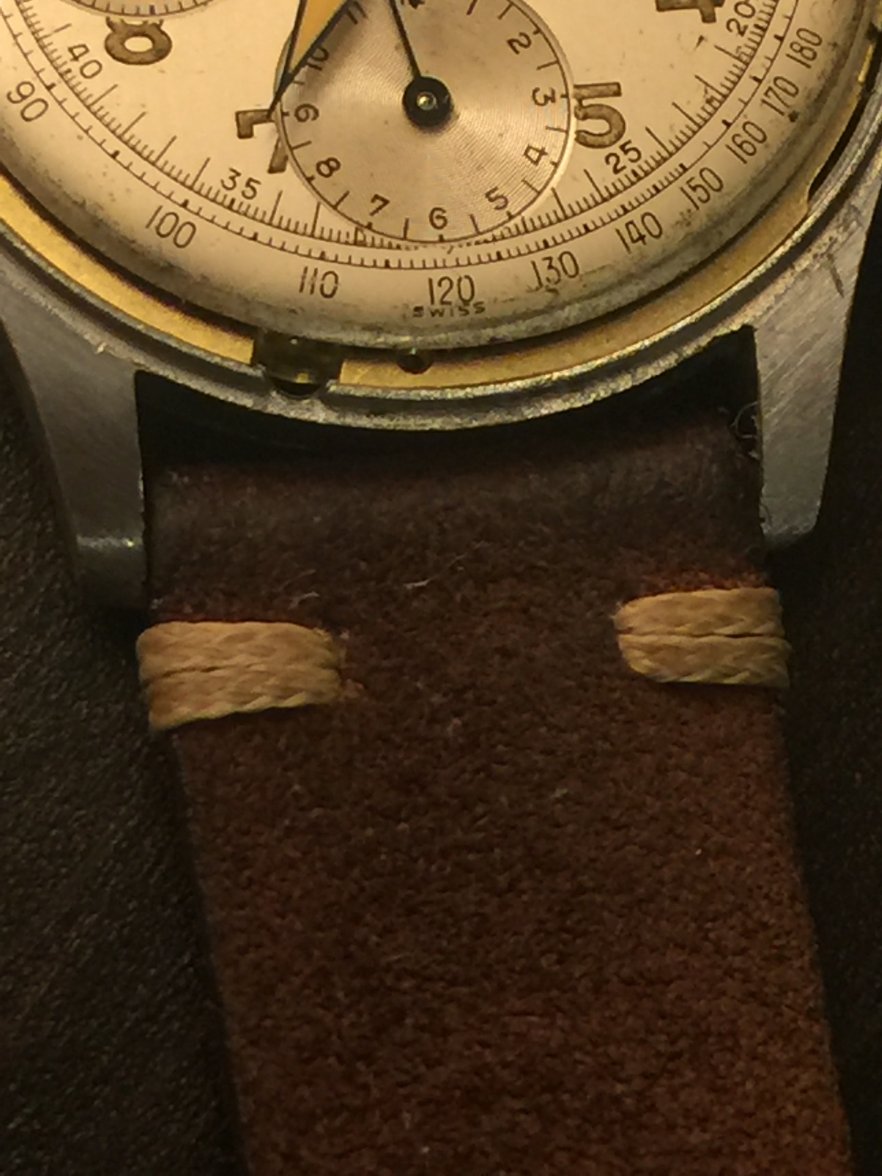bgrisso
·are a nightmare to deal with......
I haven't had to deal with them before UG, and having a hard time getting watch straps on without mangling them. The problem that I see is the lug to lug width must be compressed down to the lug to pin width, which is several MM shorter. As illustrated by the diagram below. With a solid piece of soft leather, like suede, this can be done relatively easily WITHOUT the spring bar, by simply bending the strap in the middle and slipping it around the pins. With the spring bar in place, obviously the strap cannot be bent, and the only option is lateral compression. Again, with a solid and soft strap, this can be done to some degree, but it damages the leather.
With other (dressier) fancy leather straps, there is often a leather veneer on the outside and suede on the inside, with a core of some kind. When I tried to put one of these on a tri compax recently it damaged the strap significantly and the "laminates" started pulling apart to some degree.
Anyhow, I searched online trying to figure out if I was doing it wrong, if there were any tips or tricks, and I cannot find anything.
Am I correct in thinking they are basically a major PITA to deal with, and often the straps are damaged to some degree, and only certain kinds of straps are suited?
Additionally, the pins are often slightly bent, which makes things even more difficult.
I haven't had to deal with them before UG, and having a hard time getting watch straps on without mangling them. The problem that I see is the lug to lug width must be compressed down to the lug to pin width, which is several MM shorter. As illustrated by the diagram below. With a solid piece of soft leather, like suede, this can be done relatively easily WITHOUT the spring bar, by simply bending the strap in the middle and slipping it around the pins. With the spring bar in place, obviously the strap cannot be bent, and the only option is lateral compression. Again, with a solid and soft strap, this can be done to some degree, but it damages the leather.
With other (dressier) fancy leather straps, there is often a leather veneer on the outside and suede on the inside, with a core of some kind. When I tried to put one of these on a tri compax recently it damaged the strap significantly and the "laminates" started pulling apart to some degree.
Anyhow, I searched online trying to figure out if I was doing it wrong, if there were any tips or tricks, and I cannot find anything.
Am I correct in thinking they are basically a major PITA to deal with, and often the straps are damaged to some degree, and only certain kinds of straps are suited?
Additionally, the pins are often slightly bent, which makes things even more difficult.
